Electronics
Tools for Possibilities: issue no. 51
Once a week we’ll send out a page from Cool Tools: A Catalog of Possibilities. The tools might be outdated or obsolete, and the links to them may or may not work. We present these vintage recommendations as is because the possibilities they inspire are new. Sign up here to get Tools for Possibilities a week early in your inbox.
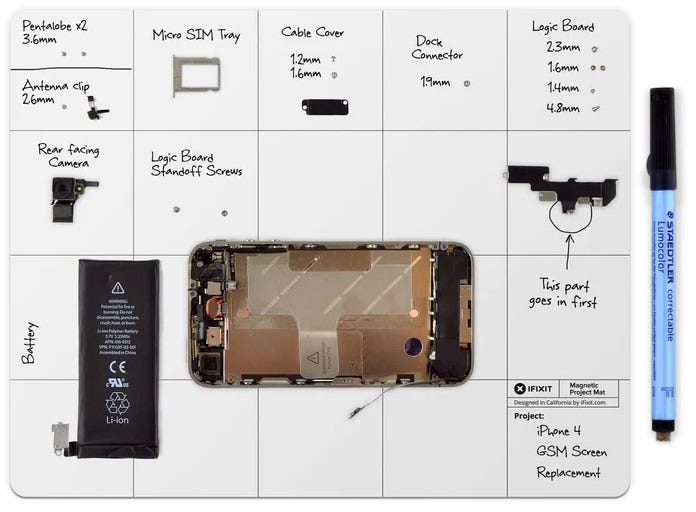
Magnetic DIY repair station
In the past few months I’ve had to repair my iPhone, my digital camera, and my Macbook Pro. During this time I’ve found the iFixit’s magnetic mat indispensable. Not only does the magnetic surface mean fewer lost screws, but it’s whiteboard surface means I can keep track of what came from where. Intelligently, iFixit includes a very nice fine-tipped dry-erase marker from Staedtler for quickly jotting down repair notes (that also features a bit of wool on the cap for erasing them, too). The pro model mat, which I own, also features a nonslip foam backing much like that of a mousepad which when flipped upside down features cutouts that act like cups.
I like mine so much that it never leaves my desk as it serves as miniature whiteboard, mousepad, and DIY repair station. — Oliver Hulland
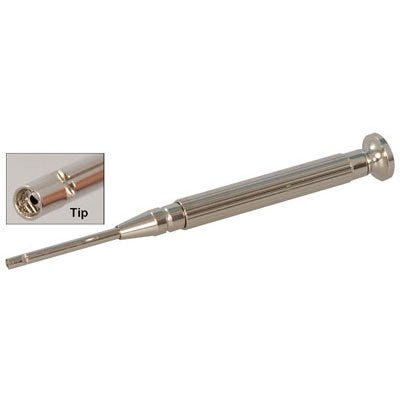
Non-soldering connections
This is a beautiful and inexpensive tool; a rare mechanical hand tool with precise tolerances. To attach fine wires, such as wiring up LEDs into circuits, wire wrap makes soldering unnecessary. Strip about 3/8 inch on the end of a wire, thread the exposed wire up one of two incredibly tiny slots in the end of the wirewrap tool, put the other tiny slot of the wirewrap tool around the wire it is to be connected to, like the anode or cathode of an LED, then twirl the wirewrap tool in your fingers, leaving a tiny tight spiral of wire wrapped around the connection. — Howard Rheingold
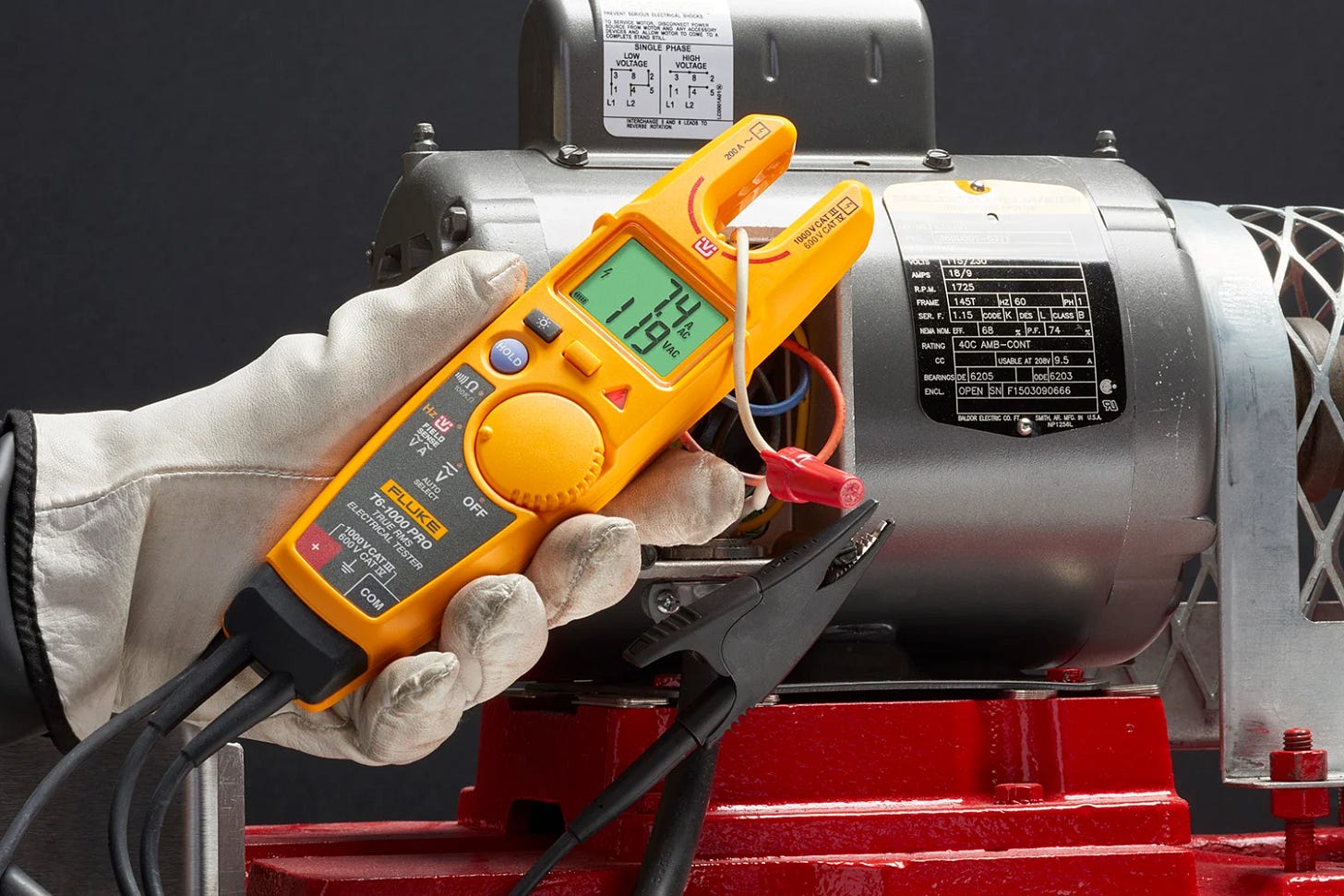
Digital multimeter w/built-in AMP meter
Fluke Voltage, Continuity & Current Tester
The T5 is as reliable as a good, old-fashioned “wiggy” voltage tester, but adds the functionality of a digital multimeter (DMM) and an AMP meter combined. I’ve found the T5 to be a bit more robust than the average DMM and very reliable for a device in this price range. More importantly, it has a “fork” or “OpenJaw” that can be extended over a current-carrying cable so that it acts like an AMP-clamp, except you don’t have to maneuver or close the jaws, making it quicker and easier to use. The fork is also a lot less intrusive and requires less space than the old open-and-clamp design. Perfect for a cramped motor panel or junction box. For most functioning/troubleshooting, it’s helpful to know first if there is voltage and then if there is current (the garden hose comparison: do I have water pressure? is water flowing?). And, for service work for instance, it’s great to be able to check both voltage and amperage of a motor running with one very lightweight, ergonomic tool.
I have been using a range of Flukes for well over 20 years — everything from a multimeter to a scope meter and other devices. However, this relatively small unit remains my go-to instrument. It is the first one I grab both at home as well as on my job (I oversee the installation of packaging lines nationwide and, at times, do trouble shooting on pieces of automated equipment). There are two version of the T5, the 1000 and 600 models. The main difference between the T5-1000 and the T5-600 is their maximum voltage ratings, 1000 and 600 VAC respectively. To me, the relatively small price difference between the 600 and 1000 was worth it, but for general work around the house, the 600 should be perfect. — Ad Verkuylen
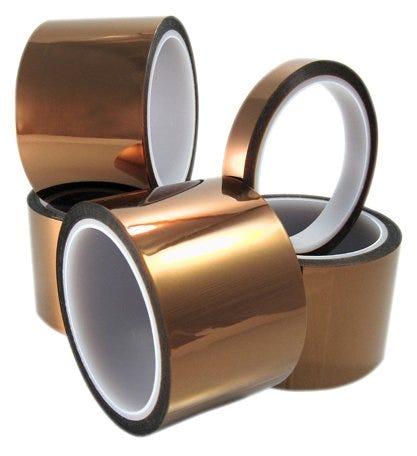
A better tape for electronics
I do a lot of work with electronics assembly and disassembly, rewiring, and removing and adding components. Kapton tape (generically known as polyimide tape) is a cool tool in these cases and better than regular black electrical tape for a number of reasons:
It is heat resistant. You can put a soldering iron on Kapton tape and it will not melt. In fact, numerous flexible circuits are made with copper on a Kapton substrate where the components are soldered directly to the copper.
It does not stretch. This may be either a pro or con, but it’s good when you just want to tape down wires.
It is thin. Actually, it comes in various thicknesses. I usually get the 2 mil (0.002″) thick stuff in the 1/2″ wide rolls. When you’re trying to cram as much as possible into a given space, the low profile and smooth, slick surface help tremendously.
The adhesive leaves no discernible residue. You can pull the tape off after a year and not worry about having to clean anything else up.
As mentioned before, the tape comes in different widths and thicknesses, depending on your need. You can also get it with adhesive on one side or both, though there may be limited width/thickness availability for the two-sided tape.
If you take apart any consumer electronics device nowadays, you’ll notice three or four different kinds of adhesives and tapes being used (I’d cover the rest because they’re also great, but I really don’t use them that much and don’t know what they’re called nor how to source them).
Mostly, I use this tape as insulation on either a PC board or wires, especially if I think I’m going to have something on top of it that I’ll be soldering. It’s a bit overkill for just taping down wires, but still, that’s better than Scotch tape or electrical tape.
I have no favorite brands of Kapton tape, I just buy a roll from my local electronics supply house when I need more. — Mark Huie
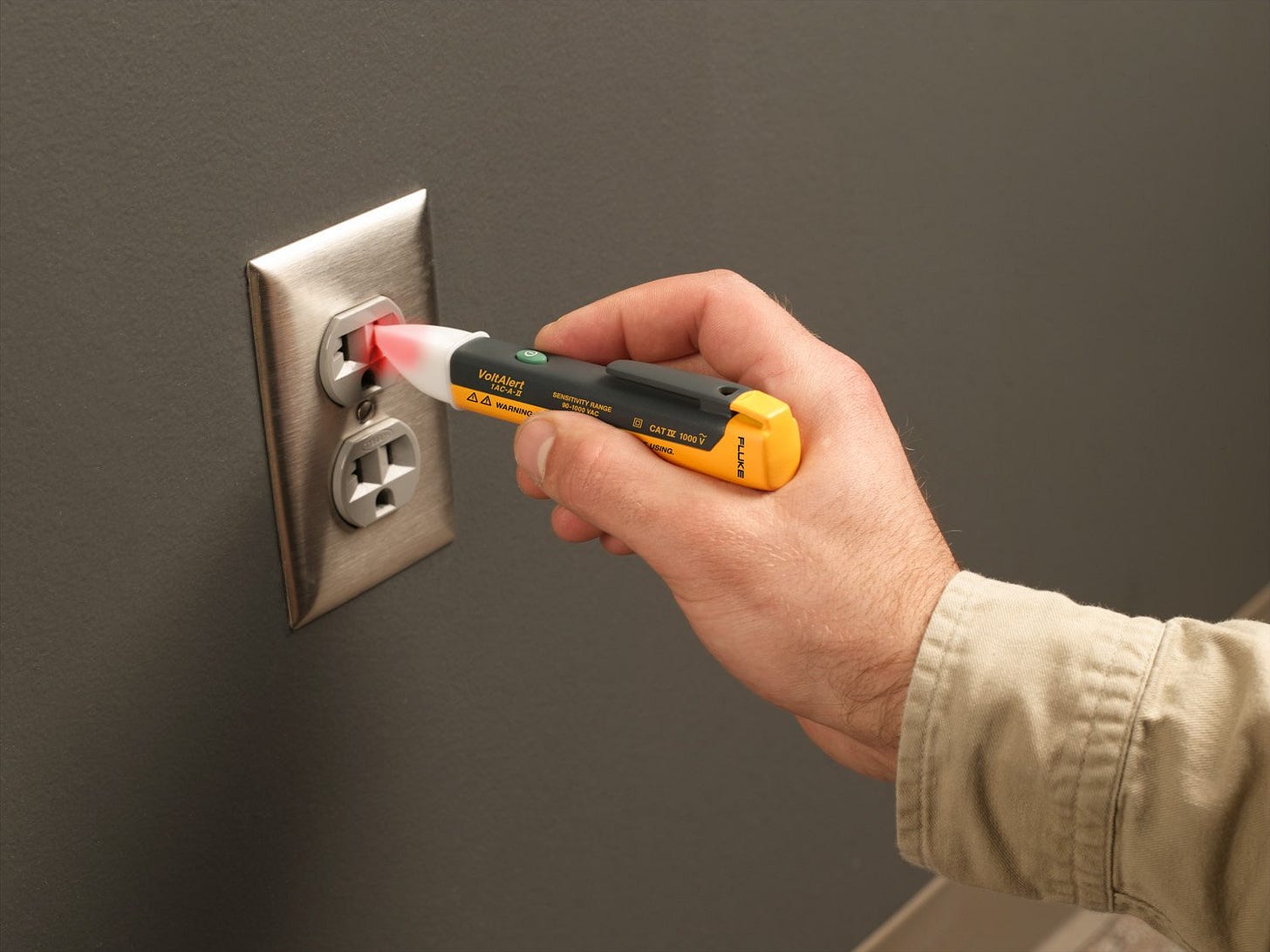
Electricity finder
This is a non-conductive (plastic), non-contact voltage sensor that glows red and/or beeps in the vicinity of an energized conductor. In other words, it lights up near a “live” wire. You don’t actually have to make contact to see if the line is hot. It lights up even if there is no load on the line since it senses the electric field, not the magnetic field. It’s much easier to use than a contact indicator light or meter. It works for AC line voltages. Also, it only lights up when near the “hot” line, not the ground or neutral, so you can immediately see if an outlet is wired b. Works great for finding the dead Christmas light bulb on a series string of lights too (not as easy though when you have two or more strands braided together.) I always rub it against my shirt first to see if it is working. Static discharge sets it off. A number of vendors besides Fluke make this type of device, but Fluke is a h name brand. — Bruce Bowen
09/11/23





